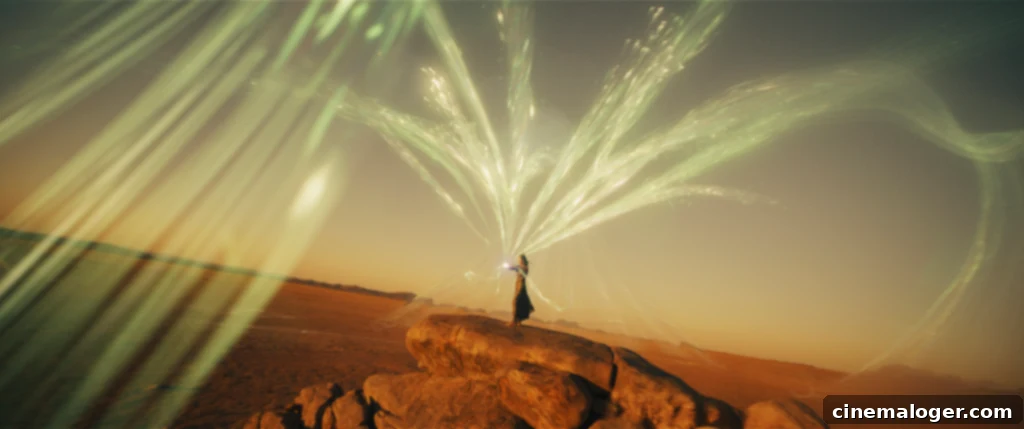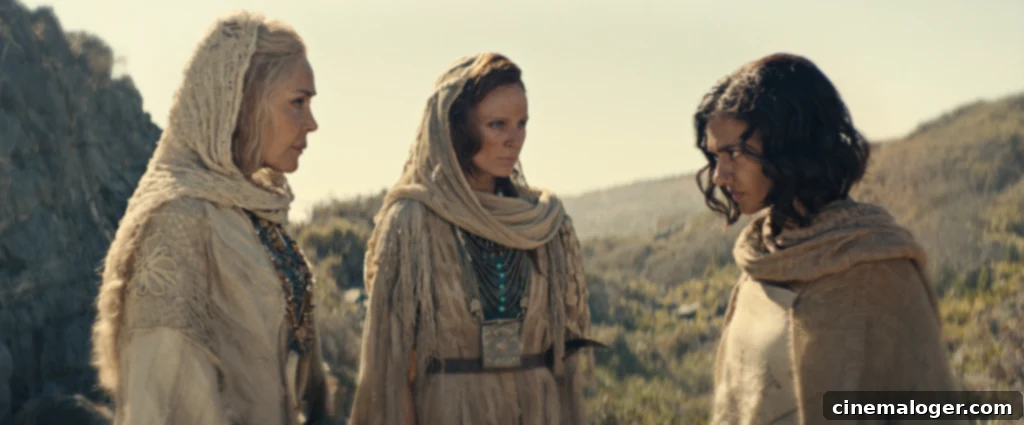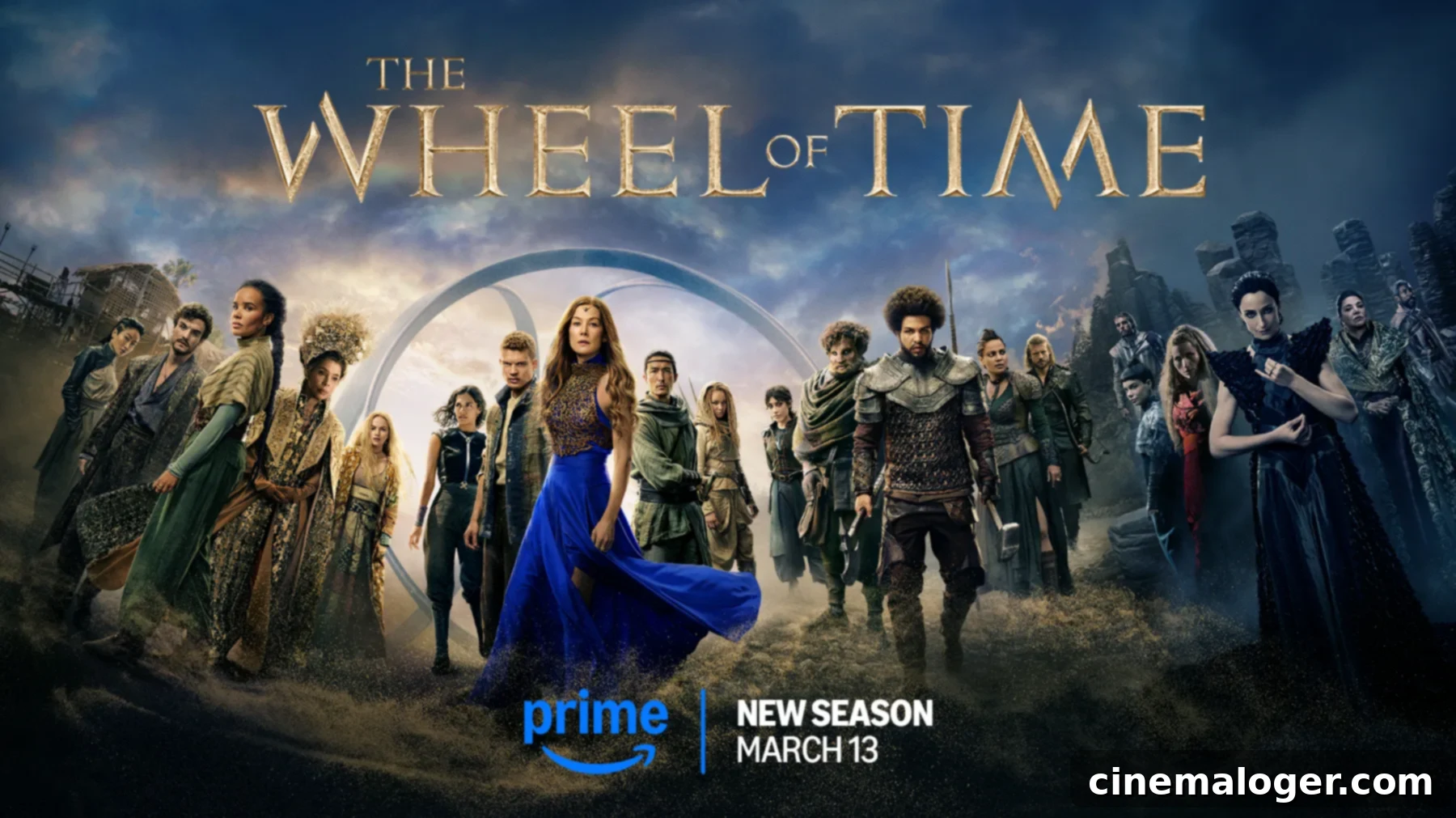The Wheel of Time: Unraveling the Surprising Cancellation of Prime Video’s Epic Fantasy Series
Despite previously being one of Prime Video’s most anticipated and successful shows, *The Wheel of Time* faced an unexpected cancellation after three seasons, leaving fans and critics pondering the reasons behind this decision. This article delves into the ambitious series, its journey, and the factors that led to its premature end.
The television industry has experienced a tumultuous period in recent months, particularly throughout 2025, with numerous acclaimed productions being axed by their respective studios and networks. Among the most impactful of these recent cancellations was Prime Video’s flagship fantasy series, The Wheel of Time. The adaptation, starring acclaimed actress Rosamund Pike, was canceled before a season 4 renewal could be secured, a development that has profoundly disappointed its dedicated fanbase.
The announcement of the cancellation surfaced approximately one month after the third season’s finale aired in April 2025, adding to the shock and immediate speculation among viewers and industry observers alike.
Hollywood Life, among other outlets, has diligently gathered and reported on the developing details surrounding The Wheel of Time‘s untimely conclusion, providing insights into a decision that surprised many, given the show’s initial success and the enduring popularity of its source material.

What Was Prime Video’s Wheel of Time About?
The Wheel of Time series was an ambitious adaptation of the monumental fantasy novels penned by the late Robert Jordan, with the final volumes completed by Brandon Sanderson. The literary saga, comprising fourteen main novels and a prequel, is widely regarded as one of the most significant and influential works in the fantasy genre, known for its intricate world-building, vast scope, and diverse cast of characters. The television series aimed to bring this sprawling narrative to life for a global audience, a challenge many considered daunting given the source material’s complexity and length.
Set in a richly imagined world where magic, known as “channeling,” is accessible only to a select few, the story primarily follows Moiraine Damodred, a powerful member of the Aes Sedai—an influential, all-female organization of magic users based in the White Tower. Her journey begins as she seeks out the Dragon Reborn, a prophesied individual destined to either save the world from the malevolent entity known as the Dark One or, tragically, shatter it once more, much as the original Dragon did millennia ago during a cataclysmic event known as the Breaking of the World.
Moiraine’s quest leads her to the remote, peaceful village of Emond’s Field in the Two Rivers region, where she encounters a group of five young adults: Rand al’Thor, Egwene al’Vere, Perrin Aybara, Mat Cauthon, and Nynaeve al’Meara. Believing one of them to be the reincarnation of the Dragon, she embarks with them on a perilous journey across a world teetering on the brink of another global conflict, introducing them to the vast political landscapes, ancient prophecies, and terrifying threats that lie beyond their sheltered home. The series expertly wove together themes of destiny versus free will, the cyclical nature of time, the corrupting influence of power, and the complex interplay between different cultures and philosophies, all against the backdrop of an impending struggle between light and shadow. The first two seasons meticulously laid the groundwork for this epic conflict, introducing viewers to key locations like Tar Valon and Fal Dara, and deepening the mysteries surrounding the Dragon Reborn’s identity and ultimate purpose.

Why Was The Wheel of Time Canceled?
The decision to cancel The Wheel of Time has been met with significant disappointment, particularly as neither Amazon MGM Studios nor Sony Pictures, the co-producers behind the series, have released an official public statement detailing the specific reasons. However, a report from Deadline, a highly reputable industry publication, shed some light on the matter. According to their sources, after “lengthy deliberations” between the involved parties, the primary “reasons were financial, as the series is liked creatively by the streamer’s executives.” This suggests a challenging scenario where creative approval did not translate into financial viability for continued production.
Despite its initial strong performance and being heralded as one of Prime Video’s most successful series in its debut, The Wheel of Time reportedly experienced a notable decline in viewership during its third season. For streaming platforms, sustained viewership and subscriber retention are critical metrics. While initial subscriber acquisition is important, the long-term engagement of existing subscribers and the attraction of new ones through ongoing, popular content determine a show’s longevity. A significant drop in audience numbers, especially for a high-budget production, signals to executives that the return on investment might not justify the substantial costs.
Fantasy epics like The Wheel of Time are inherently expensive to produce. They demand significant budgets for elaborate visual effects, extensive set designs, period costumes, and often involve large ensemble casts and international filming locations. The logistical complexities and associated costs for such a global production are considerable, requiring hundreds of millions of dollars per season. When viewership wanes, the cost-benefit analysis shifts unfavorably. Amazon, like other streaming giants, has increasingly been scrutinizing content spending, favoring shows that deliver a strong, consistent audience relative to their production price tag. The global nature of the show, meaning its performance was assessed across numerous international markets, further complicated renewal decisions, as results around the world had to collectively justify the massive expenditure.
Moreover, the streaming landscape has become increasingly competitive and saturated. Audiences have an abundance of choices, and even well-liked shows can struggle to maintain consistent engagement against a backdrop of new releases and established favorites. The strategic shift in many streaming companies towards profitability over pure subscriber growth means that even creatively successful series are not immune to cancellation if they fail to meet rigorous financial benchmarks. This trend highlights a broader industry movement where expensive genre shows face intense scrutiny, especially if they do not consistently draw a massive, dedicated global audience to offset their towering production bills. It appears that while The Wheel of Time had its champions within Amazon, the financial realities of its production and its performance trajectory ultimately led to the difficult decision to conclude the series.
Who Was in the Wheel of Time Cast?
The success of The Wheel of Time was significantly bolstered by its talented and diverse cast, led by the distinguished Golden Globe and Academy Award-nominated actress, Rosamund Pike. Pike took on the pivotal role of Moiraine Damodred, an Aes Sedai of the Blue Ajah whose unwavering resolve and powerful channeling abilities set the narrative in motion. Her nuanced portrayal brought depth and gravitas to a character central to the entire saga, anchoring the sprawling ensemble.
The core group of young protagonists from Emond’s Field included a blend of established and rising stars:
- Josha Stradowski brilliantly embodied Rand al’Thor, the unassuming shepherd destined for greatness, grappling with his identity and the weight of prophecy.
- Madeleine Madden portrayed Egwene al’Vere, a fiercely independent and powerful young woman who discovers her own formidable abilities within the Aes Sedai.
- Marcus Rutherford brought warmth and quiet strength to Perrin Aybara, whose connection to wolves and internal struggles formed a compelling character arc.
- Zoë Robins captivated audiences as Nynaeve al’Meara, the fiery Wisdom of Emond’s Field, whose stubbornness and healing prowess became cornerstones of the story.
- Barney Harris initially played Mat Cauthon in the first season, a charming rogue with a mysterious destiny, later replaced by Dónal Finn from Season 2 onwards.
The supporting cast further enriched the series’ intricate tapestry, featuring a host of memorable characters:
- Daniel Henney portrayed al’Lan Mandragoran, Moiraine’s stoic and loyal Warder, a master swordsman and an enduring fan favorite.
- Kate Fleetwood delivered a chilling performance as Liandrin Guirale, an Aes Sedai of the Red Ajah whose true allegiances were a constant source of tension.
- Priyanka Bose played Alanna Mosvani, an empathetic Aes Sedai of the Green Ajah, known for her deep bonds with multiple Warders.
- Other notable cast members included Sophie Okonedo as Siuan Sanche, the Amyrlin Seat; Kae Alexander as Min Farshaw, a seer of glimpses into the Pattern; and Fares Fares as the menacing Darkfriend, Ishamael, later revealed as the Forsaken Lanfear portrayed by Ceara Coveney.
The collective efforts of this talented ensemble helped to bring Jordan’s complex characters to life, making their journeys, struggles, and triumphs resonate deeply with viewers, despite the ultimate decision to conclude the series. Their performances were consistently highlighted as a strength of the adaptation, showcasing their dedication to their roles and the expansive narrative.
Fan Reaction and the Legacy of the Adaptation
The cancellation of The Wheel of Time sent ripples of disappointment and frustration throughout its dedicated fanbase, many of whom had followed the book series for decades. For many, the show represented a long-awaited opportunity to see their beloved characters and intricate world brought to cinematic life. Online forums, social media, and fan communities erupted with discussions, expressing sadness over the premature end and speculating on what might have been. Petitions were launched, and campaigns initiated, reflecting the passionate investment viewers had in the series’ continuation, particularly given the vast amount of source material still left to adapt.
The decision also sparked broader conversations about the challenges of adapting epic fantasy novels for the screen, especially in the current streaming climate. Critics and fans often debated the show’s creative liberties compared to the books, the pacing of its narrative, and the portrayal of key characters and plot points. While some deviations were celebrated for streamlining the story, others were met with resistance. Nevertheless, the series undeniably succeeded in introducing a new generation of viewers to Robert Jordan’s world, rekindling interest in the original novels and proving the enduring appeal of high fantasy.
Despite its cut-short run, The Wheel of Time leaves behind a legacy as a bold attempt to translate one of fantasy literature’s most formidable sagas. It showcased Amazon’s ambition in the genre, following in the footsteps of its colossal investment in The Lord of the Rings: The Rings of Power. The show’s production values, commitment to a diverse cast, and solid performances will be remembered, even if the narrative remains incomplete on screen. It serves as a poignant reminder that even creatively strong and well-received adaptations can fall victim to the unforgiving financial realities of the modern streaming industry, where budgets are scrutinized and audience metrics are paramount. For fans, the journey may have ended too soon, but the world of The Wheel of Time, in both its literary and televised forms, will continue to turn in their hearts and minds.
